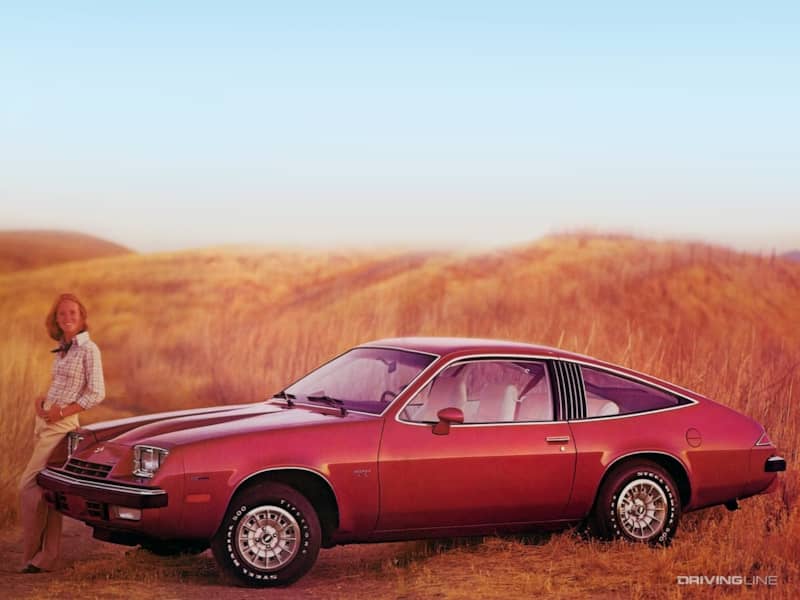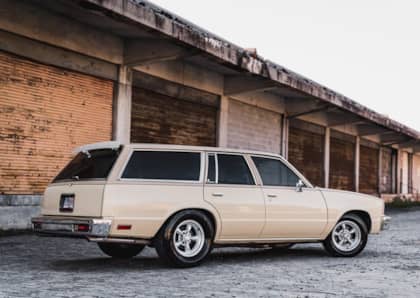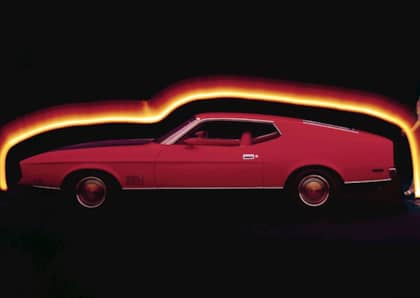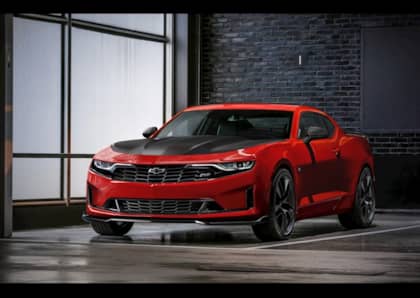The Chevrolet Monza Tried To Marry Euro Handling And Detroit Muscle
It's fair to say that by the mid-1970s, Detroit no longer had a cohesive plan when it came to performance cars. With EPA smog restrictions choking down V8 output, combined with soaring fuel prices and bulky, overweight designs in nearly every showroom, American cars had become a shadow of their former muscle car glory.

The Chevrolet Monza came about in 1975 as a way for General Motors to try and shake off the malaise of the era and try to attract a new breed of enthusiasts into its showrooms. The plan was a simple one: take its current small car platform, boost it with V8 power, and then try to match the recent flood of import sports coupes (like the BMW 2002 and the Datsun 510) in terms of handling and fun.
The execution? Well, that was something else entirely, and says more about GM in that period that it does about the Monza itself.
Cheap To Build
The biggest appeal of the Monza to Chevrolet's top brass was that it was cheap to build. By leveraging the existing Vega platform, Chevy could churn out a four-seat hatchback that was only slightly larger and heavier than the entry-level compact, keeping sleek proportions without having to make any major (read: expensive) changes.

The fact of the Monza's affordability also made it a tempting test bed for technologies that ultimately weren't ready for prime time. Specifically, GM had spent millions of dollars over the previous few years trying to design a version of the Wankel rotary engine that made sense for American buyers.

Charmed by its lightweight, modest dimensions and its promise of high-revving horsepower, General Motors was itching to drop the Wankel design being used by companies like NSU and Mazda (which, like GM, had licensed the German automakers design) into an affordable car like the Monza. Unfortunately, the company was never able to overcome the rotary's propensity to guzzle gas, and the idea had to be shelved.
Almost Fun
Given the Monza's Italian-inspired looks, it needed more than just the base four-cylinder engine in the line-up in order to court fun-seeking buyers (especially considering that 2.3L unit was the same trouble-prone aluminum block unit found in the Vega). The solution came in the form of a 4.3L V8 that was good for 115hp (or, if you were lucky and lived in California or the Rockies, a 5.7L V8 that added an extra 10 ponies).

Neither car was particularly quick, hitting 60-mph in a slothful 18.5 seconds, but that was true of almost every other auto in the GM line-up at the time (including the Monza's corporate clones the Oldsmobile Starfire, the Buick Skyhawk, and the Pontiac Sunbird, sold on the same H-body platform). A 5.0 eight-cylinder became available in 1977, bringing with it 140hp, and by the end of the car's six year run a V6 was also in the cards.

Despite its mediocre straight line sped, the Monza (and a few of its siblings) made their case by emphasizing handling chops over muscle. There were several Chevy Monza Spyder packages, which offered a mix of light performance-enhancing features (more responsive suspension, dual exhaust), with a long list of visual upgrades that included spoilers, decals, and air dams.

There was also the Mirage edition of the car, a call-out to road course racers by way of its widebody look and aero goodies. Chevrolet had taken the Monza racing on the IMSA circuit, and for the 1977-only package many of the Mirage cars featured a similar patriotic paint job as compared to the competition cars.

Not every Monza was sporty, of course. There was a Towne Coupe with a trunk available, and the base car was nothing special. Then there was the awkward 'Vega' phase towards the end of the decade, where GM gave leftover version of the out-of-production compact the Monza nose and sold wagon and hatch hybrids as the Monza S.

The Monza would leave dealerships after the 1980 model year to make way for GM's new X-body, front-wheel drive small cars, which would prove to be a complete and total disaster for the company.
Decent Potential, If You Can Find One
If much of the above sounds underwhelming, it's true that in stock form the Monza fell victim to the same listlessness that preyed on almost every American performance car of its time. The platform, however, had potential that savvy hot rodders could use to elevate the Monza above less exciting competitors like the Mustang II. With a curb weight of 3,000 lbs, it was equally at home on a drag strip or as a road course option for budget-oriented builders.

Leaving aside the IMSA cars, which would dominate the GT class in 1976 and 1977 (while sharing only body work, roof, and glass with the stock car), the Monza platform could accept a wide range of V8 engine swaps, or indeed have its own V8s modified using the same small block Chevy parts that were common to the brand's earlier muscle machines. That aftermarket support continues to this day, and owners of four-cylinder Chevy Monzas frequently substitute an eight-cylinder motor to build a much more powerful version of the pint-size hatch (not to mention replace its stock 13 inch wheels for meatier 15 inchers).

Today, the Monza is a rare beast. Although 800,000 examples were built, rust, attrition, and poor build quality conspired to thin the herd dramatically in the decades since the Chevrolet was new. Throw in the fact that few Monza owners expected to get more than a handful of years use out of their cheap rides—an attitude endemic to Detroit's casual production values of the time—and these cars were never deemed special enough to be saved. After briefly flooding the market, the ravages of time have made the Monza and its cousins an unusual sight at any cruise night.
More From Driving Line
- Curious about other obscure GM muscle cars? Check out these Chevrolet Camaro concepts that never saw the light of day.











